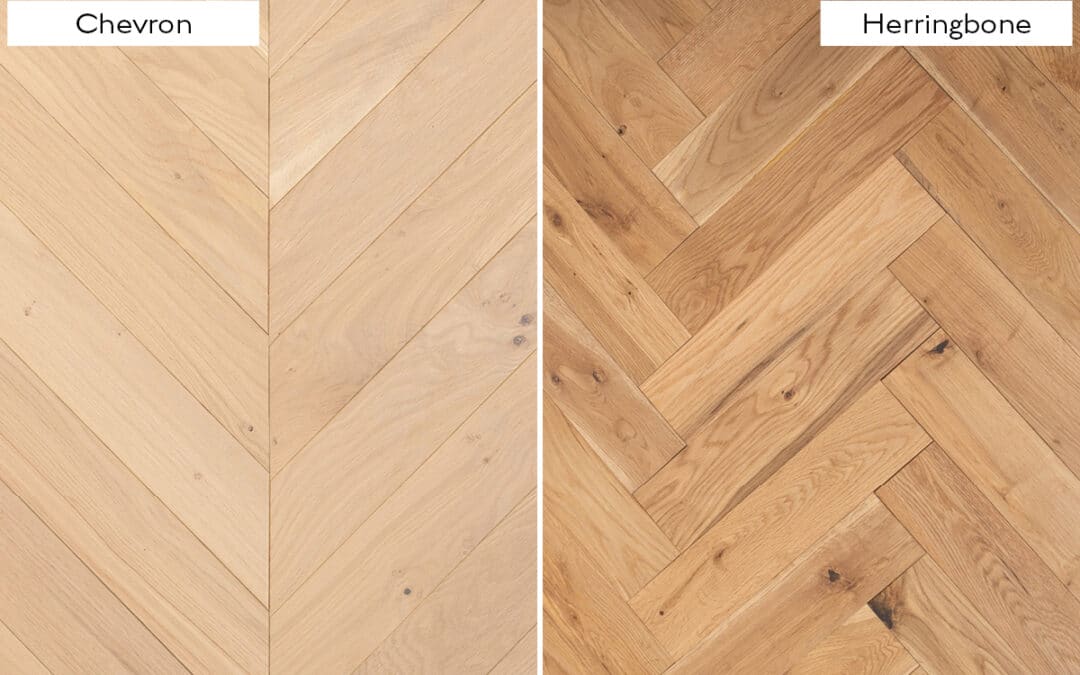When it comes to flooring and interior design, the choice of patterns plays a pivotal role in setting the tone for a space. Two classic patterns that often grace the floors of stylish homes are herringbone and chevron. Although they may appear similar at first glance, each pattern carries its own unique charm and visual impact. In this article, we will explore the distinctions between herringbone and chevron patterns, uncovering the timeless elegance that both bring to interior spaces.
Herringbone: The Classic Zigzag:
The herringbone pattern is characterized by a series of rectangular pieces arranged in a zigzag or V-shaped design. This classic pattern dates back to ancient civilizations, including its prominent use in Roman road construction. The herringbone pattern exudes a sense of tradition and timeless charm, making it a popular choice for those who appreciate the enduring beauty of classic design.
Chevron: The Sleek Parallel Lines:
In contrast, the chevron pattern features a series of parallelograms that are connected at the ends to form a continuous zigzag design. The key distinction lies in the fact that, unlike herringbone, the chevron pattern results in continuous diagonal lines without the alternating breaks at the midpoint. Chevron patterns have a sleek and modern aesthetic, creating a sense of movement and dynamic energy within a space.
Aesthetic Differences:
While both herringbone and chevron patterns involve zigzag arrangements, their aesthetic impact is distinct. Herringbone, with its alternating breaks in the pattern, offers a more traditional and intricate appearance. The repeated V-shapes create a sense of movement and flow, adding a touch of sophistication to any room. Chevron, on the other hand, presents a more streamlined and contemporary look, with uninterrupted diagonal lines that evoke a sense of modern elegance.
Versatility in Design:
Both herringbone and chevron patterns are incredibly versatile, adapting well to various interior design styles. Herringbone’s timeless appeal makes it a popular choice for classic and traditional settings, while Chevron’s modern aesthetic fits seamlessly into contemporary and eclectic designs. The adaptability of these patterns allows homeowners and designers to choose the one that best suits their style and the overall theme of the space.
Installation Challenges:
The installation process for herringbone and chevron patterns differs, with herringbone being considered more challenging due to its alternating breaks and intricate layout. Achieving the perfect V-shaped alignment requires precision and attention to detail, making the installation process more labor-intensive. Chevron patterns, with their continuous diagonal lines, may be somewhat easier to install, but careful planning is still essential to maintain the desired visual impact.
Spatial Perception:
Both herringbone and chevron patterns have unique effects on the perception of space. Herringbone patterns tend to widen a room visually, creating a sense of expansiveness. This makes herringbone a popular choice for smaller rooms or narrow hallways where the goal is to visually open up the space. Chevron patterns, with their continuous lines, have a different effect, often elongating a room and adding a sense of depth.
Conclusion:
In the timeless debate between herringbone and chevron patterns, there is no clear winner, as each brings its distinct charm to interior spaces. Herringbone exudes classic elegance and intricate detailing, while chevron offers a sleek and modern aesthetic. The choice between these patterns ultimately depends on personal preferences, design goals, and the overall ambiance one wishes to create. Whether you lean towards the enduring charm of herringbone or the contemporary allure of chevron, both patterns stand as testaments to the enduring appeal of classic design in the world of interior aesthetics.

